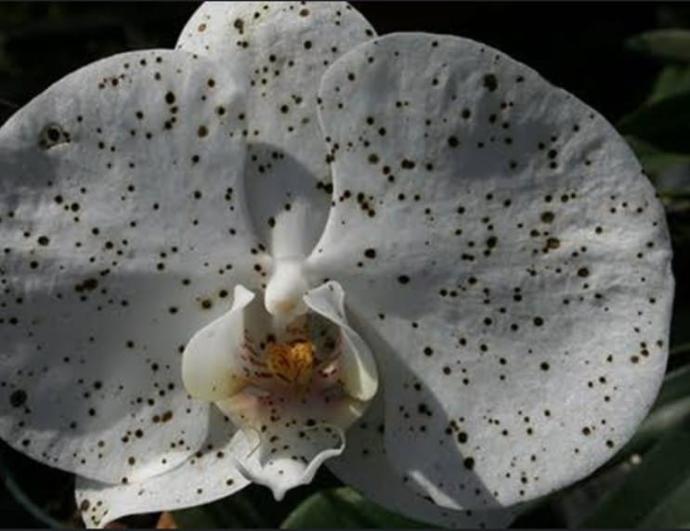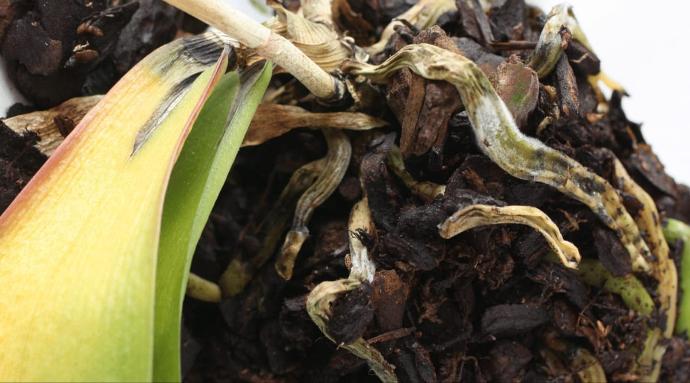Orchid Plant
Orchids, epiphytic plants with slow growth, thrive in well-drained soil and bright indirect light. With moderate moisture needs, Orchids are highly valued for their exotic and diverse flowers, commonly grown as indoor ornamental plants.
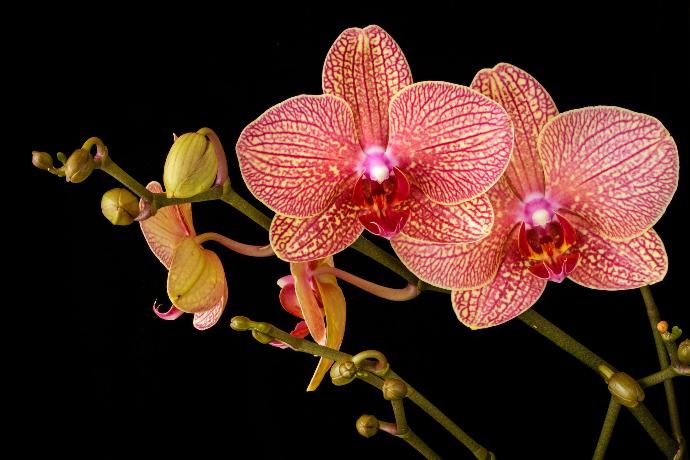
Habit
Epiphytic
Height
0.2-1.5 m
Growth
Slow
Soil
Well-drained, bark-based mix
Shade
Bright Indirect Light
Moisture
Moderate
Edible
No
Medicinal
No
Origin
Worldwide
Climatic Condition
Tropical, Subtropical
Temperature (°)
20-30°C
Humidity (%)
60-80%
Potting media
Orchid mix
Fertilizers
Balanced NPK (30:10:10)
Watering
Moderate, misting
Plant Weight
100-500 g
Flowering Time
Year-round, Spring
Soil Ph level
5.5 - 6.5
Water Ph level
6.0 - 7.0
Soil EC
1-2 dS/m
Yield Per Plant
Ornamental flowers
NPK ratio
30:10:10)
life Span
Perennial
Health Benefits
Air-purifying, stress relief, ornamental
Suggested Grow Media or Potting Mix ?
50% bark, 30% perlite, 20% sphagnum moss
Suggested Fertigation/Fertilizers
Fertilize every 2 weeks with an orchid-specific fertilizer.
Common Diseases and Remedies
Black leg, Botrytis blight
Brown water-soaked tissues at the base of the cutting, Tiny translucent spots.
Foliar spray, Organic compost.
HEALTH BENEFITS
- Some orchids, like Dendrobium, are used in traditional medicine for immune support.
- Vanilla Orchid produces vanilla, which has antioxidant and anti-inflammatory properties.
- Orchids help improve indoor air quality and create a calming environment.
What Is An Orchids?
Orchids are a diverse and widespread family of flowering plants known for their complex and beautiful flowers. They come in a wide variety of colors, shapes, and sizes and are found on every continent except Antarctica. Orchids have a reputation for being exotic and sometimes difficult to grow, but with proper care, many species will grow both indoors and outdoors. Orchids are a species of flowering plants in the family Orchidaceae, one of the largest families of flowering plants. Orchids are known for their diverse and showy blooms, which come in a variety of shapes, sizes, and colors. They are prized for their beauty and are often grown both indoors and outdoors. Orchids are found in nearly every habitat except deserts and glaciers, and are known for their often complex relationships with pollinators.
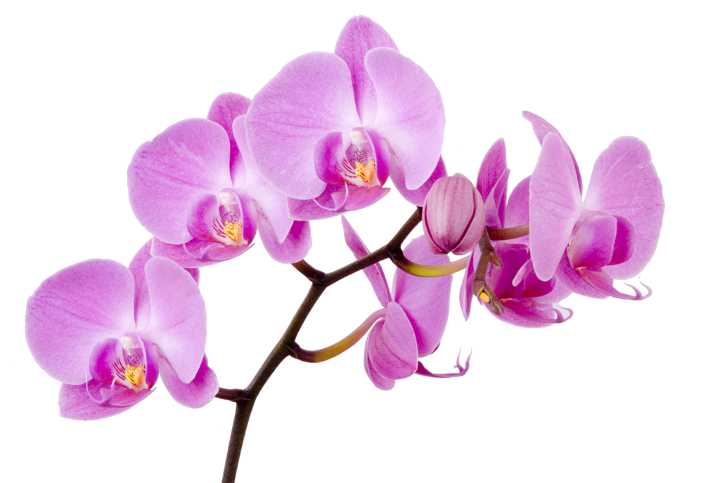
What Are The Different Types Of Orchids?
1. Phalaenopsis
Known for its large, colorful flowers and easy care.
2. Cattleya
Often used for boutonnieres, it produces large, showy flowers.
3. Dendrobium
A diverse group with a variety of flower shapes and sizes, popular for their longevity.
4. Oncidium
Known for its small, colorful and often fragrant flowers.
5. Paphiopedilum
Identified by its pouch-like lips with unique slipper-shaped flowers.
6. Vanda
Large, bright flowers that usually grow hanging from baskets.
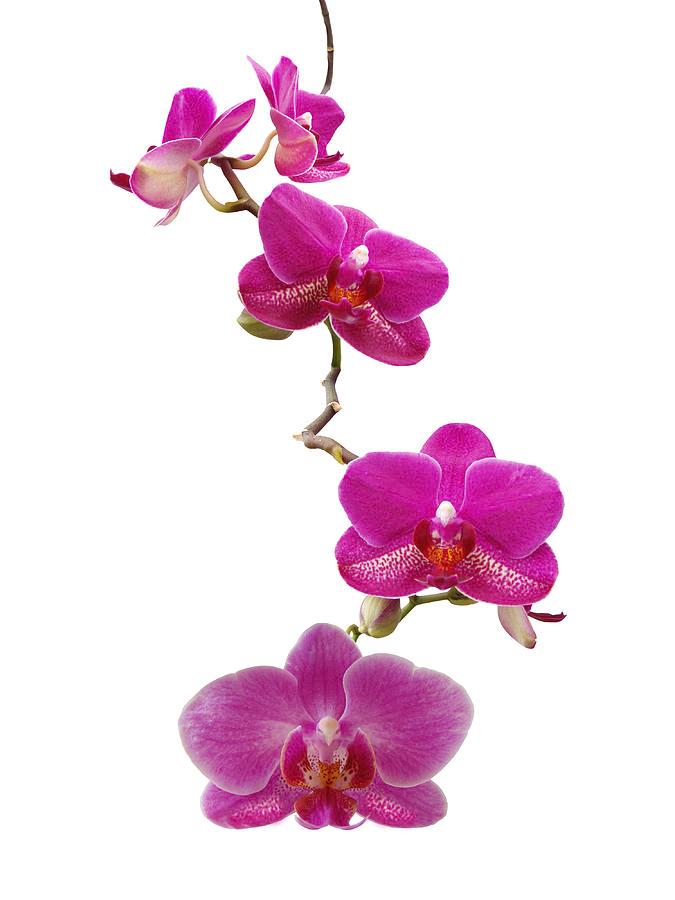
How To Care For Orchids?
1. Location
The ideal location for your orchid will depend on the specific orchid species, but it generally grows best in bright, indirect light. Avoid direct sunlight as it may cause leaf burn. Also, ensure good air circulation around the plant and maintain constant humidity. Some orchids may also benefit from a slight drop in nighttime temperatures. Overall, aim for a location with stable conditions and enough light for your orchid to grow.
2. Sunlight
Orchids usually grow in indirect sunlight or light shade. They prefer bright, filtered light to direct sunlight, which can burn the leaves. It is usually ideal to place it near a window with sheer curtains or an east-facing window that receives morning sunlight. If you are growing your orchid indoors, we recommend providing 12 to 14 hours of bright, indirect light per day. Adjust your placement depending on how it reacts to light in your particular environment.
3. Soil
Orchids usually require well-drained potting soil to grow. You can use special orchid mixes that contain materials such as bark, perlite, and peat moss. Avoid using regular potting soil as it tends to retain too much moisture and can cause orchid root rot.
4. Hydration
To keep your orchid hydrated, you should water it thoroughly when the top inch of potting soil feels dry. Orchids are prone to root rot, so it's important not to overwater them. Also, consider the specific needs of the type of orchid you have, as different varieties may have slightly different requirements.
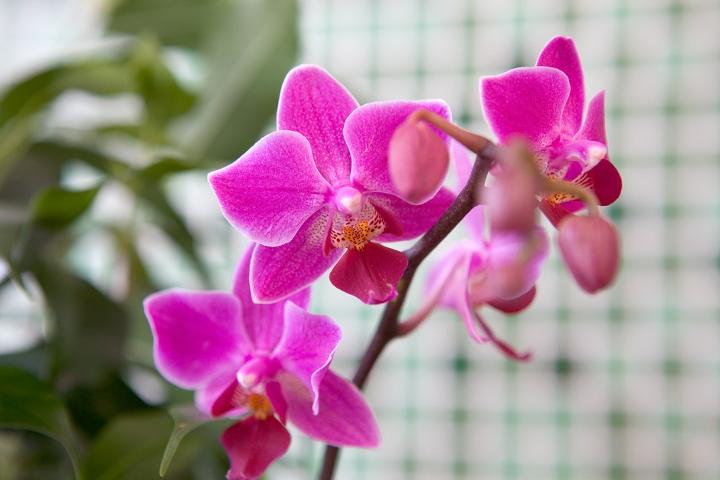
5. Nourishment
Orchids usually require a balanced fertilizer designed specifically for orchids. Look for fertilizers with high nitrogen content for healthy foliage growth and balanced phosphorus and potassium content for root and flower growth. Dilute the fertilizer according to the manufacturer's instructions and apply it regularly (usually every 2 to 4 weeks) throughout the plant's active growth period. Also, be sure to use a well-draining orchid potting mix and water your plant when the top inch of the potting medium feels dry. Proper light exposure and temperature regulation are also important for orchid health and flowering.
6. Issues
When light dries the atmosphere too much, orchids become weak, shrink, and stunted. Also, if the plant grows well but does not bloom, the light is too long for the short photoperiod (short day) orchid. The temperature inside your home can be an issue.
What Are The Benefits Of Orchids?
Beauty appeal Orchids are known for their amazing beauty, wide range of colors, shapes and sizes, making them ideal for flower arrangements and decorations. is popular. Air Purification Orchids improve indoor air quality by absorbing carbon dioxide and releasing oxygen during photosynthesis. Stress Relief Caring for orchids can be a therapeutic hobby that promotes relaxation and reduces stress. Symbolism Orchids symbolize love, luxury, beauty, and strength in many cultures, making them a popular gift for special occasions. Long-lasting flowers If properly cared for, orchids can last for weeks or even months, allowing you to enjoy them for a longer period of time than many other types of cut flowers. Diversity Thousands of orchid species and hybrids exist, offering collectors and enthusiasts a wide range of opportunities to explore a variety of colors, shapes, and scents.
FAQs About Growing Orchids
1. How to maintain orchid?
Light Place your orchid in a location with bright, indirect light. Avoid direct sunlight, as it can burn the leaves. Watering Orchids should be watered thoroughly once a week or when the potting mix feels dry to the touch. Ensure proper drainage to prevent waterlogging, which can lead to root rot. Humidity Orchids thrive in high humidity environments. You can increase humidity by placing a tray of water with pebbles beneath the orchid pot or using a humidifier. Temperature Most orchids prefer temperatures between 60-80°F (15-27°C) during the day and slightly cooler at night. Avoid placing them near drafts or heating/cooling vents. Potting Mix Use a well-draining orchid mix consisting of materials like bark, perlite, or sphagnum moss. Repot orchids every 1-2 years to refresh the potting mix and provide adequate space for root growth. Fertilizing Feed orchids with a balanced orchid fertilizer diluted to half strength every 2-4 weeks during the growing season (spring and summer). Reduce or stop fertilizing during the dormant season (fall and winter). Pruning Remove spent flowers and dead or yellowing leaves with sterilized scissors to promote healthy growth and prevent disease. Air Circulation Ensure good air circulation around the orchid to prevent fungal infections and stagnant air around the roots.
2. What are the uses of orchid?
Ornamental plants Orchids are primarily grown for their beautiful flowers, making them popular choices for decorations, bouquets, and indoor ornamental plants. Horticulture Orchids are cultivated for commercial purposes in the horticulture industry, where they are propagated and sold as potted plants or cut flowers.Medicine Some species of orchids have medicinal properties and are used in traditional medicine for treating ailments such as coughs, fevers, and digestive issues. Perfumery Orchid extracts are sometimes used in the perfume industry to add fragrance to perfumes and cosmetics. Culinary uses Certain orchid species have edible parts, such as the vanilla orchid (Vanilla planifolia), which is used to produce vanilla flavoring. Research Orchids are also studied for their ecological importance, evolutionary biology, and genetics, contributing to scientific research and conservation efforts.
3. Can I grow orchid as indoor?
Yes, you can definitely grow orchids indoors! Many species of orchids thrive indoors as long as they receive proper care, including appropriate light, humidity, and watering. Some common types of orchids that are well-suited for indoor cultivation include Phalaenopsis, Paphiopedilum, and Dendrobium.
4. Which pot is best for growing orchid?
For growing orchids, it's best to use a pot that allows for good drainage and aeration, such as a clay or terracotta pot with multiple drainage holes. These pots help prevent waterlogging, which can be detrimental to orchid roots. Additionally, clear plastic pots are also popular as they allow you to monitor root growth and moisture levels easily. Whichever type you choose, ensure it's the right size for your orchid's root system and growth habits.
5. From where can I shop for orchid?
You can shop for orchids at local nurseries, garden centers, flower shops, or even online stores that specialize in plants and flowers. Many botanical gardens also have shops where you can find a variety of orchids for sale.
